"Reading content on the Internet has changed the way people process information, and nowhere is this change more obvious than in fields where design must adapt to new technology such as in eLearning. eLearning course creators need to refine their content to suit learners’ behavior and accessibility to training. This is where chunking comes into play."
Research and publish the best content.
Get Started for FREE
Sign up with Facebook Sign up with X
I don't have a Facebook or a X account
Already have an account: Login
Tech tools that assist all students to be independent learners & teachers to become better teachers
Curated by
Beth Dichter
 Your new post is loading... Your new post is loading...
 Your new post is loading... Your new post is loading...

niftyjock's curator insight,
May 26, 2014 5:48 PM
For all you Vine aficionados. Lessons using 6 second videos.

Peter Evans's comment,
July 19, 2013 2:28 PM
A useful summary table although I'd emphasise that the different 'versions' of education all have their place - v2.0 does not supercede v1.0

Elke Watson's comment,
July 19, 2013 4:49 PM
Thank you. I'm not quite ready myself to do away with teaching professionals or brick and mortal education. I value learning in a group context. I found the second summary table more useful (pedagogy, andragogy, heutagogy)

Veronica Hoyos's curator insight,
March 13, 2014 9:22 PM
We could talk of the evolution from Education 2.0 to education 3.0 after carrying an evaluation on the impact of the Web 2.0 in education |

Audrey's curator insight,
October 3, 2014 1:26 PM
These are certainly true. Have a look at www.hotmoodle.com

Bernard VULLIERME's curator insight,
October 20, 2014 5:30 AM
Rien de nouveau sous le soleil du bon e:enseignant, mais plus d'exigences …
clare o'shea's curator insight,
February 5, 2015 1:49 PM
and ask indviduals questions every 2-3 minutes - but always label the behaviour first! so it is a positive experience not a catching out!!

Bryan A. Sonda Piña's curator insight,
March 26, 2013 6:45 PM
I guess this process will take time to be a reality |



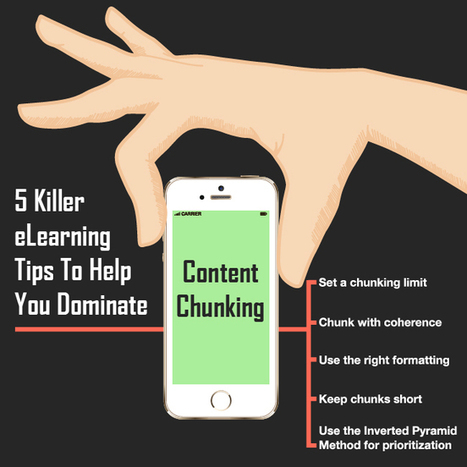

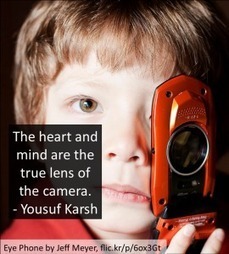
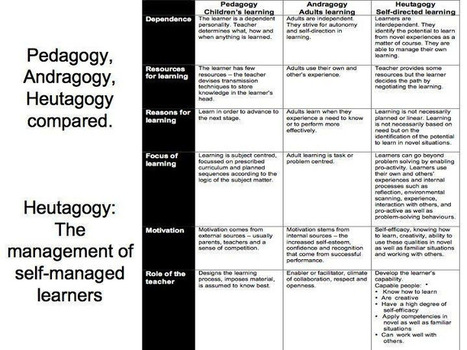

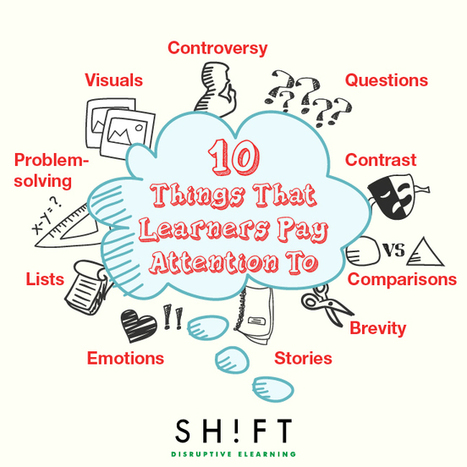

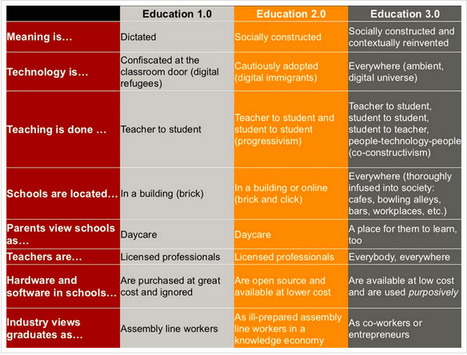





what's your chunking limit?
If you design a course, face2face or online, it is important to keep up with information on how people learn, and today we know that chunking information is critical. This post begins by describing what a chunk is and why they are important in learning. It them moves on to the five tips (quoted below):
1. Set a chunking limit
2. Chunk with coherance
3. Use the right formatting
4. Keep chunks short
5. Use the inverted pyramid method for for prioritization
Each of these is described in detail and many addional resources are included in the post. You will also find a SlideShare on the Basics of Content Chunking. If this concept is new to you it will provide additional information. However be aware that the number of items that can be held in short term memory varies, and the rule they use is not accurate for all people. A recent course I took on Coursera, Learning How To Learn, suggested that the number of items most people can keep in short term memory is four."